SUSPIRIA (2018)
A darkness swirls at the centre of a world-renowned dance company... one that will engulf the artistic director, an ambitious young dancer, and a grieving psychotherapist.
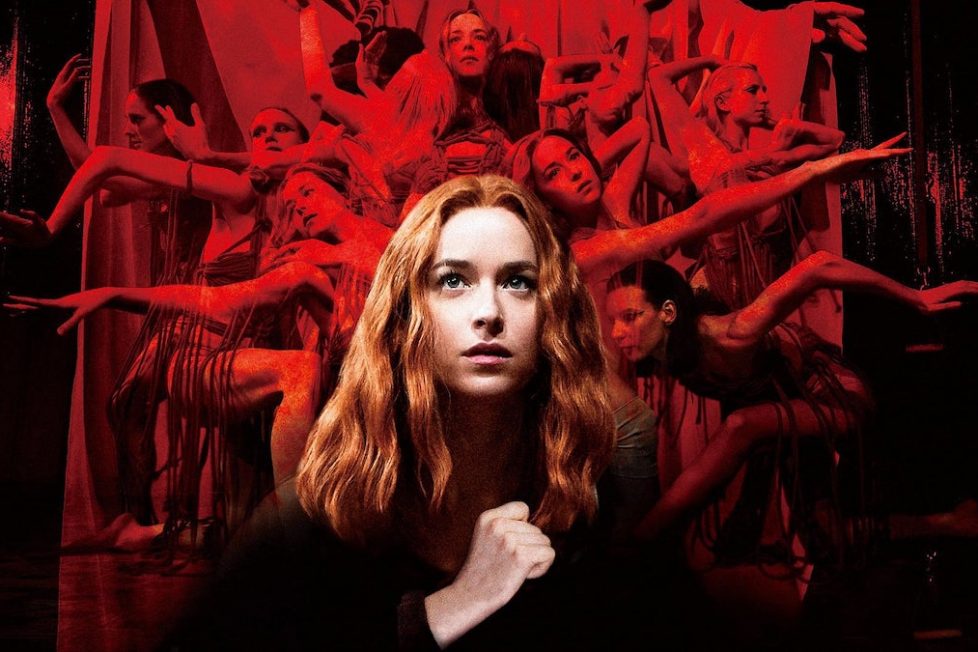
A darkness swirls at the centre of a world-renowned dance company... one that will engulf the artistic director, an ambitious young dancer, and a grieving psychotherapist.


This new Suspiria could never compete with my formative experience of watching the original. I knew that even before I saw Luca Guadagnino’s reinterpretation. Fortunately, it’s different enough to make any comparisons redundant. Nearly everything that made the original such a successfully scary assault on the senses is absent in Guadagnino’s take. He described his version as more of a homage than a remake and, taken on its own merit, it has plenty to offer.
Unfortunately, it’s not quite different enough to remain entirely unhampered by the legacy of the film that inspired it. I missed Goblin’s adrenalin-pumping electronic music, with its prolonged use of sampled sighs and croaky choral interludes. This time around, Thom Yorke’s debut film score serves up a suitably contemplative soundtrack that certainly helps to lay on the gloom but replaces that visceral excitement with a sort of downbeat melancholy that, no doubt, Radiohead fans will love.
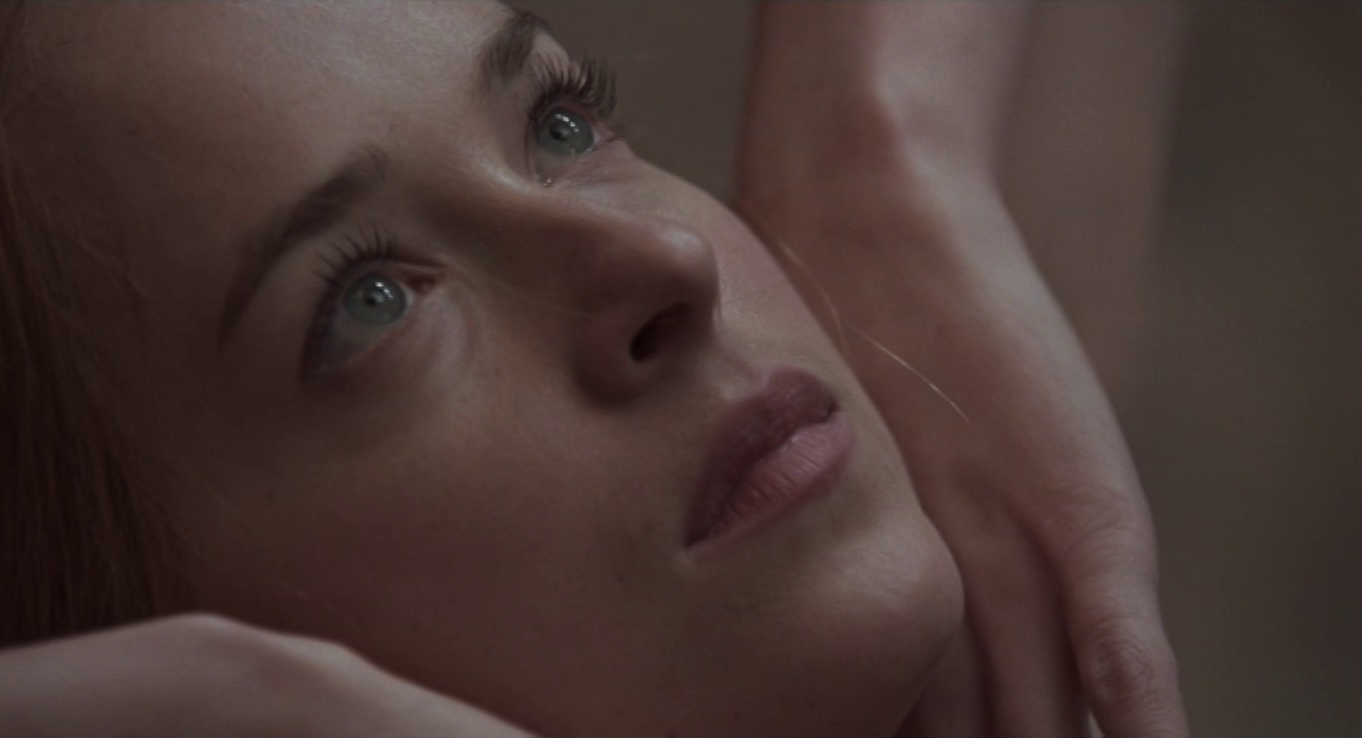
In the several scenes that are directly re-enacted, Argento’s luscious and strikingly saturated colours are made conspicuous by their absence. Instead, we have two-and-a-half hours of Guadagnino’s greys. The film remains unrelentingly drab throughout. At times it’s almost monochrome. For the most part, what colours remain are pale and dusty with a greenish tint that seems ubiquitous in Eastern European horror. This suits its setting in an austere Berlin still divided by the infamous wall. The art nouveau décor of Argento’s masterpiece is replaced with more masculine architecture, retaining just a few art deco accents. Though the 1977 period remains the same.
In this version, we get a little prologue in which a young dancer, Patrizia (Chloë Grace Moretz), has run away from the Company and gone to see her psychiatrist, Dr Joseph Klemperer (billed as ‘Lutz Ebersdorf’, a fictitious actor—we’ll come back to that…) Klemperer is the male lead and introduces a thread not present the classic. He steps up as an amateur sleuth, pulling in tropes from that other genre mastered by Argento, the giallo, and there are echoes of the Karl Malden character from The Cat O’Nine Tails (1971).
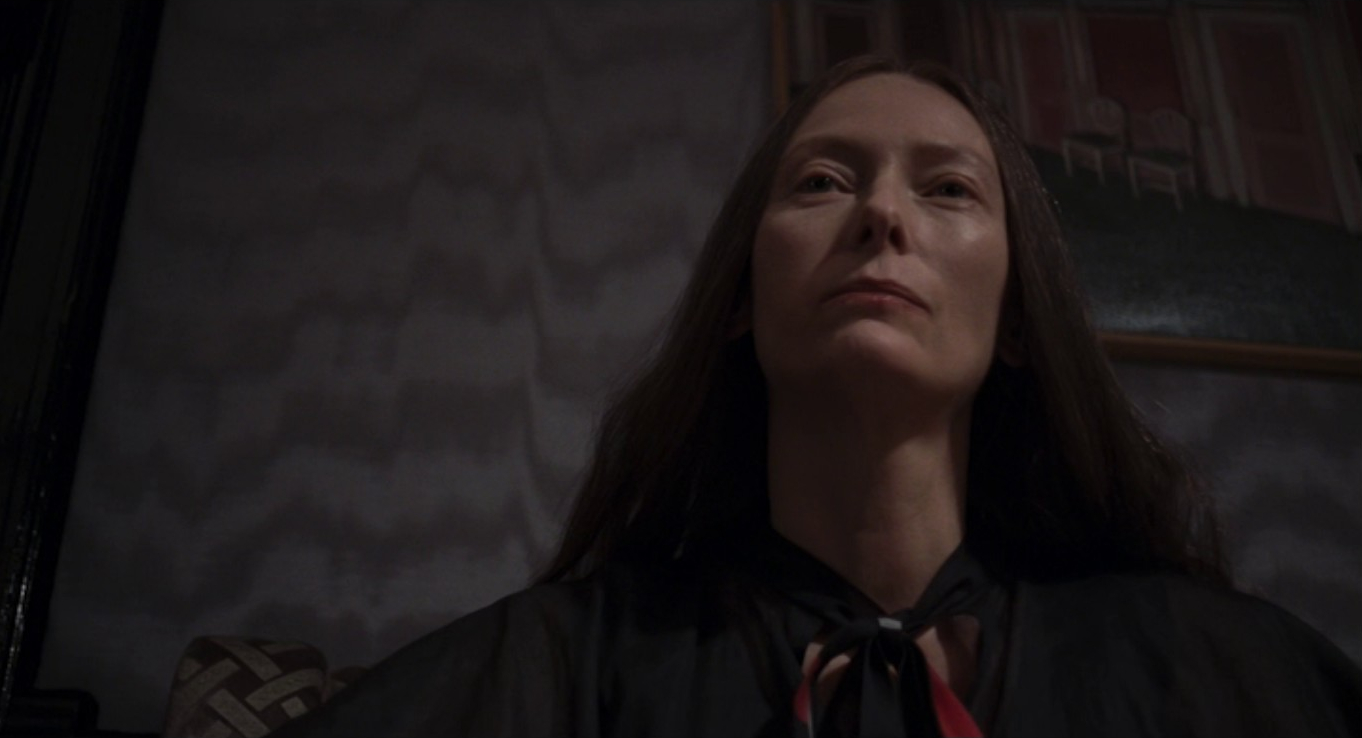
When the clearly disturbed Patrizia tells him that a coven of witches is using the Dance Company as a cover, he first dismisses her as delusional. But when she flees his office, leaving her diaries with him, he becomes suspicious. As he peruses her journals and investigates her disappearance, he also becomes a sort of Van Helsing counterpart to the vampiric witches who hide in plain sight.
Then we reach the point when young American dancer, Susie Bannion (Dakota Johnson), arrives at the Markos Tanz Gruppe. She’s there to step into the dance-shoes of the missing girl. Not only will she play her part in an upcoming show, but also in some dark conspiracy.
So far, it seemed like a sequel more than a remake. The events described by Patrizia echo the story of the original movie. A repeating cycle is implied, as if these things have recurred time and again, for centuries. The school has now become a performing company, perhaps relocating to a different place when the coven’s cover is blown. This would have been an interesting take, but having Susie Bannion again named as the central character discards this idea.
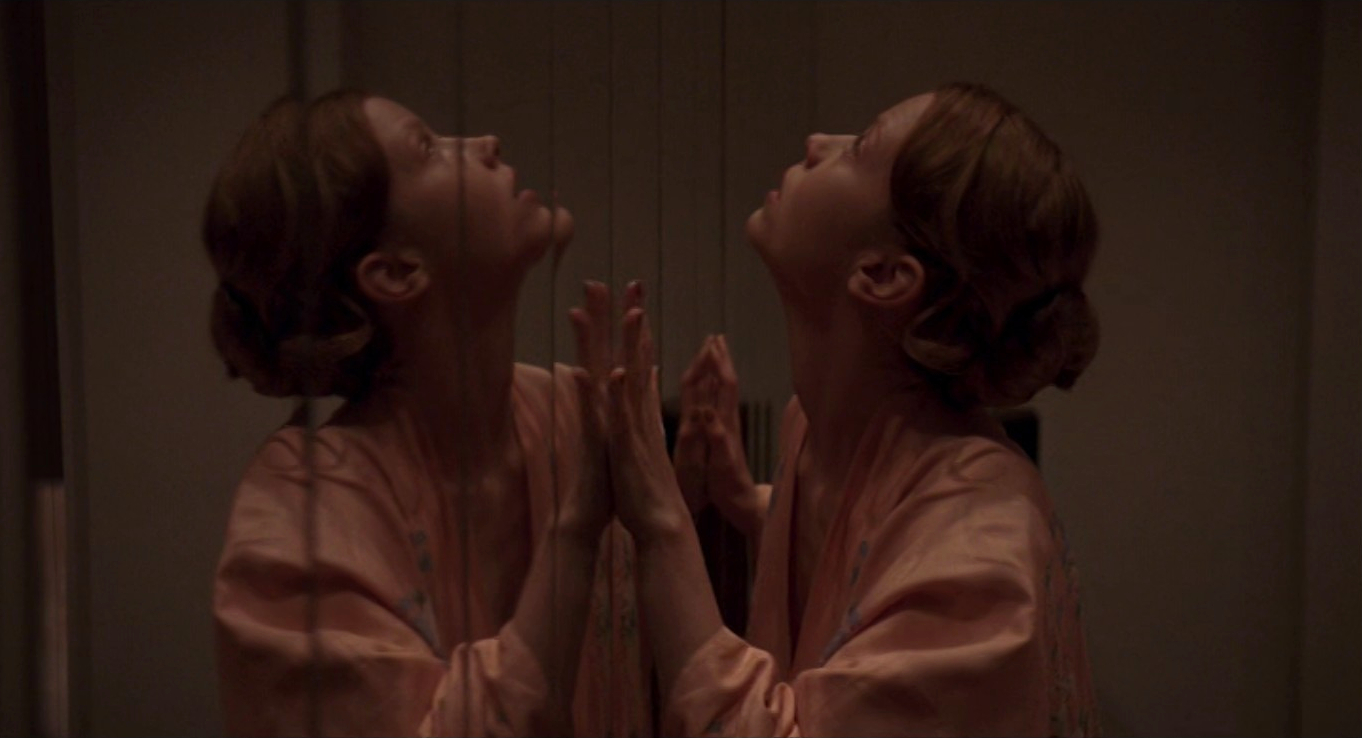
Susie’s given a fuller backstory this time, complete with flashbacks and dream imagery. We gradually learn of her deeply troubled childhood in an American religious cult masquerading as an Amish community. This is a fundamental change to the central plot. I could go through the entire narrative, comparing and contrasting the two versions of Suspiria, but that’d spoil the most fun thing about this reboot.
Luca Guadagnino may have been ill-advised to remake a film so close to his heart, especially as it’s his first venture into horror. It’s quite obviously a labour of love made by a huge fan of the original. It’s bound to be scrutinised by genre fans and he’s attempting to appease them with plenty of references and visual quotes. Not only from the original but from several other influential classics and the wider world of art history.
Just as Argento always includes deliberate art references, Guadagnino plagiarises plenty of imagery. Susie’s lovely red hair is often brushed into flowing waves to evoke the archetypal Pre-Raphaelite heroine, a motif carried through much of the film in its lighting and compositions. The collection of weird sculptural ceramics that Sara (Mia Goth) discovers in the coven’s secret basement make up a mini-exhibition and include something that looks like a vitrine from Brit artist Marc Quinn—I think it’s the most brightly coloured thing in the whole film.
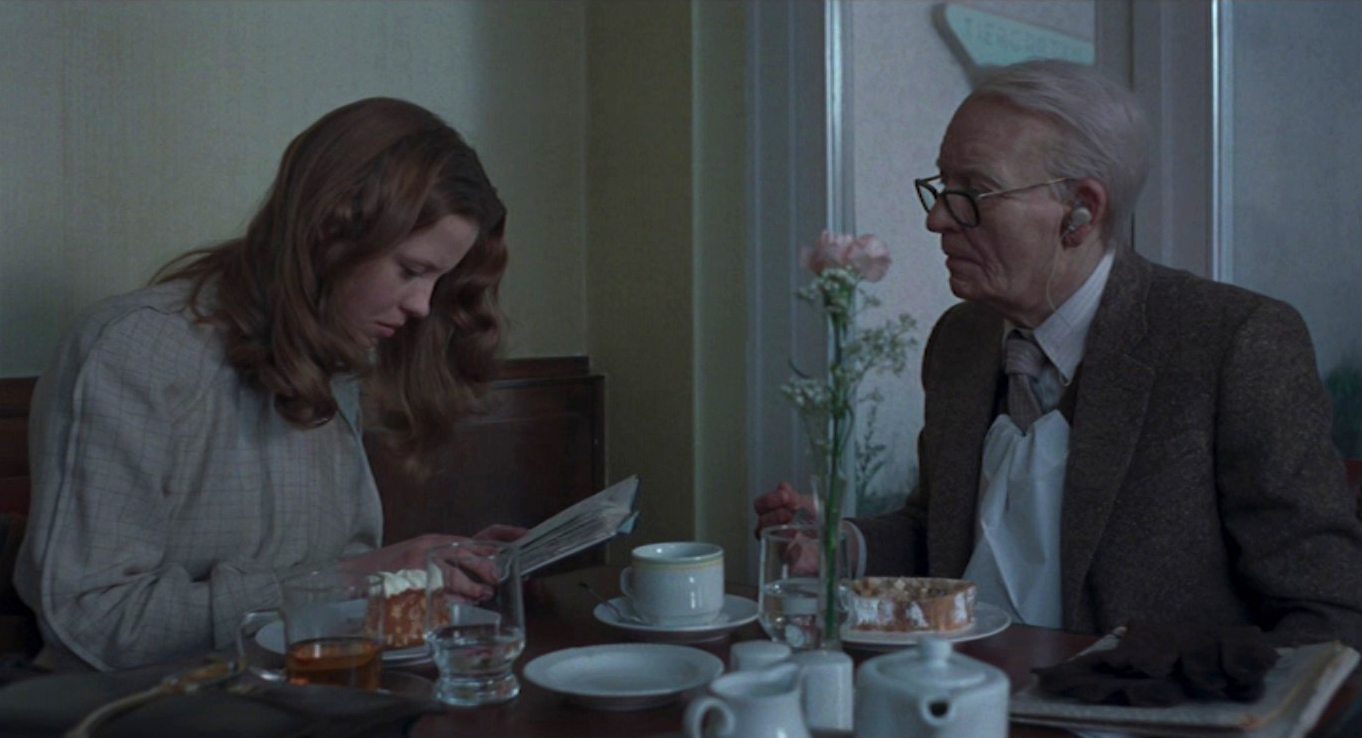
In his famous piece Garden (2000), and related works, he froze various flowers that would never naturally bloom at the same time and preserved them in an eternal arrangement within large glass tanks. In art, flowers have long been a symbol of feminine fertility, also its transience. The desire to preserve such beauty in its prime is a central motif in art and it’s a primary motivation for the decrepit coven ‘mother’, Helena Markos. Hats off to production designer Inbal Weinberg, who worked closely with the director to find props and patterns that give us a consciously coded supporting narrative. Ironically, as this is now a period piece, its retro reproduction is much more 1970s than Argento’s authentic 1970s!
Now, this tradition of ‘extending’ images from other artists is a long-established one. Certainly, since Modernism in the mid-20th-century, art has been regarded as a kind of ongoing generational dialogue between artists. So, imagine Guadagnino’s surprise when he was sued for plagiarism by the estate of the late artist Ana Mendieta. It seems their view is that the dialogue of art is a thing of the past and that art is now simply a commercial commodity. (I suppose the film world can relate to that!)
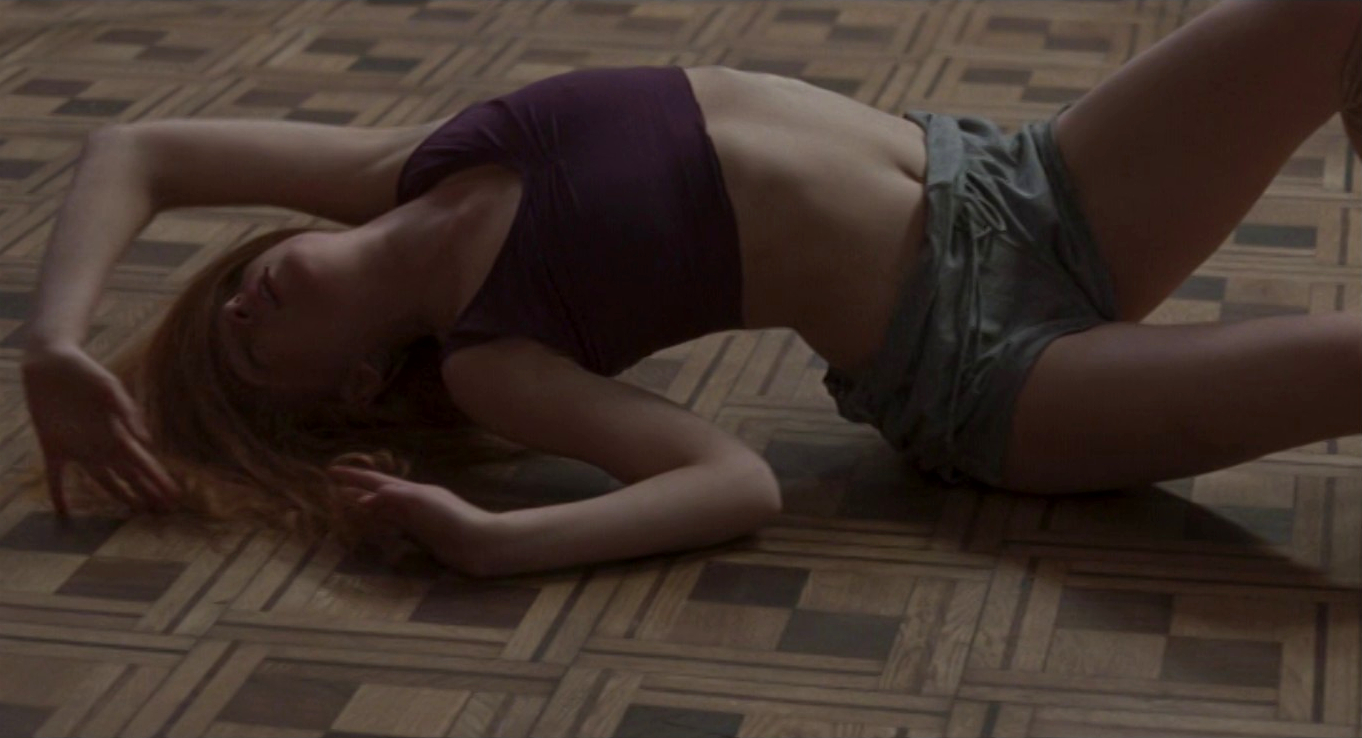
Suspiria ’18 does contain images that directly quote two of Mendieta’s works: Rape Scene (1973) and her Silueta Series (1978). Amazon Studios found themselves facing a legal suit over their inclusion. This was the first case of its kind and luckily Amazon settled out of court. A move that avoided setting a legal precedent which could’ve made it impossible, or extremely expensive, for future filmmakers to use existing visual cues or make clear references to other works. As it is, Guadagnino revels in quoting from art and his favourite films (it’s what fellow Italian auteur Sergio Leone calls ‘cinema-cinema’).
The historical backdrop of Red Army Faction terrorists and the last days of the Baader-Meinhof gang plays out on the fuzzy black and white television screens throughout. This begs comparisons with Rainer Werner Fassbinder’s The Third Generation (1978). With the casting of Ingrid Caven as Miss Vendegast one of the senior witches, this connection is highlighted. Caven was briefly married to Fassbinder and appeared in several of his films.
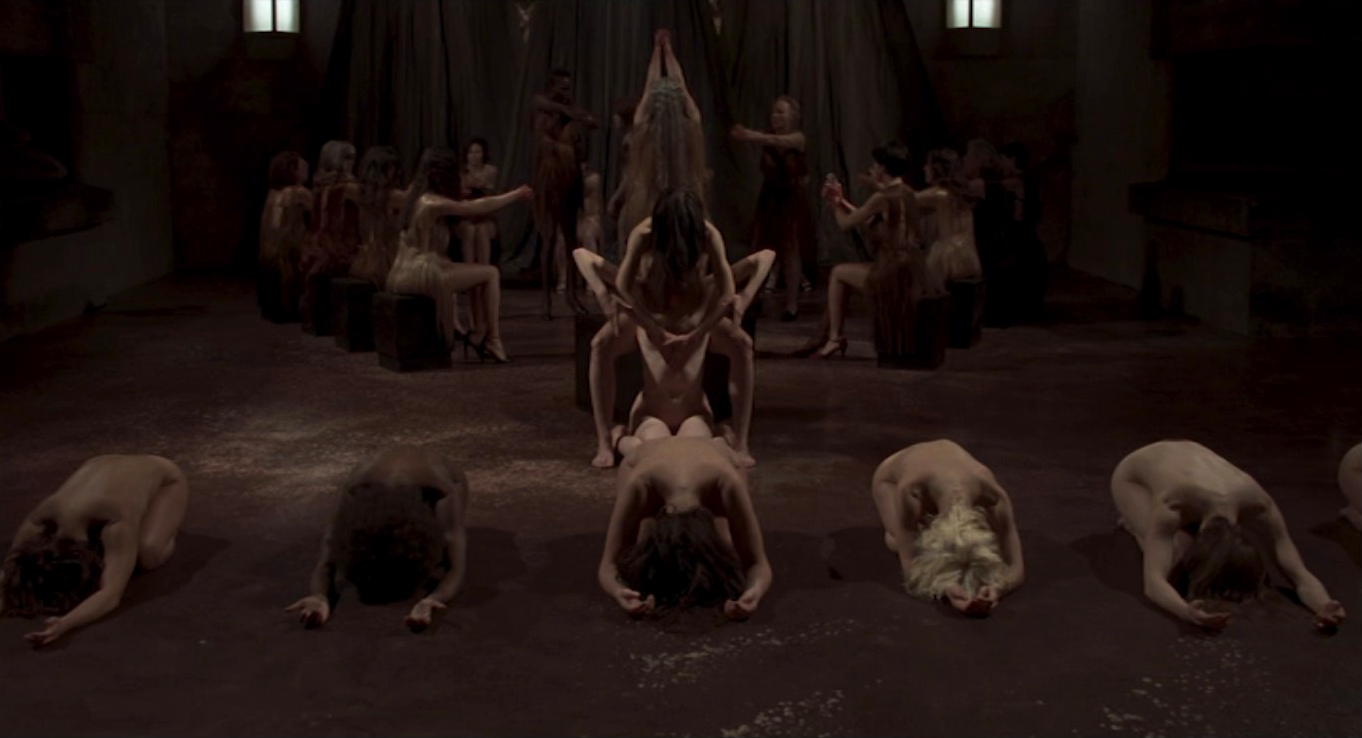
Another actress to work with Fassbinder on a film dealing with the scourge of German terrorism, Germany in Autumn/Deutschland im Herbst (1971), is Angela Winkler, who plays the stealthily wicked Miss Tanner—a re-imagined version of the role fleshed-out by the magnificent Alida Valli in the ’77 film.
It’s a great international cast, some included for their cult status as well as their considerable talent. I spotted the excellent Dutch actress Renée Soutendijk in a supporting role as Miss Huller. She’s had previous experience of playing a witch in Paul Verhoeven’s The 4th Man (1983) and racked up more than a hundred appearances since the ’70s, mainly in television. And there’s a treat for fans of the original as Jessica Harper cameos.
There’s a close correlation with Lucio Fulci’s City of the Living Dead (1980) and a couple of visual quotes make this explicit. Comparisons with Mario Bava’s Black Sunday/Mask of Satan (1960) are inevitable. There are also more than a few nods to other Argento films. I spotted deliberate references to the two follow-up segments in the ‘Three Mothers Trilogy’: Inferno (1980) and Mother of Tears (2007). The climactic scene, which contains much-naked cavorting, also borrows from the Argento-produced The Church (1989) when several bodies lock together to mime a larger image. Literally, individuals coming together to act as one.
The most overt overlap, though, would be with Alan Parker’s Angel Heart (1987). On waking from a nightmare of an identity crisis, Susie’s heard to yell “I know who I am… I know who I am!” using almost identical intonation as Harry Angel. In many ways, it could almost be considered a feminist remake of Angel Heart as much as of Suspiria and fuses central ideas from both stories.
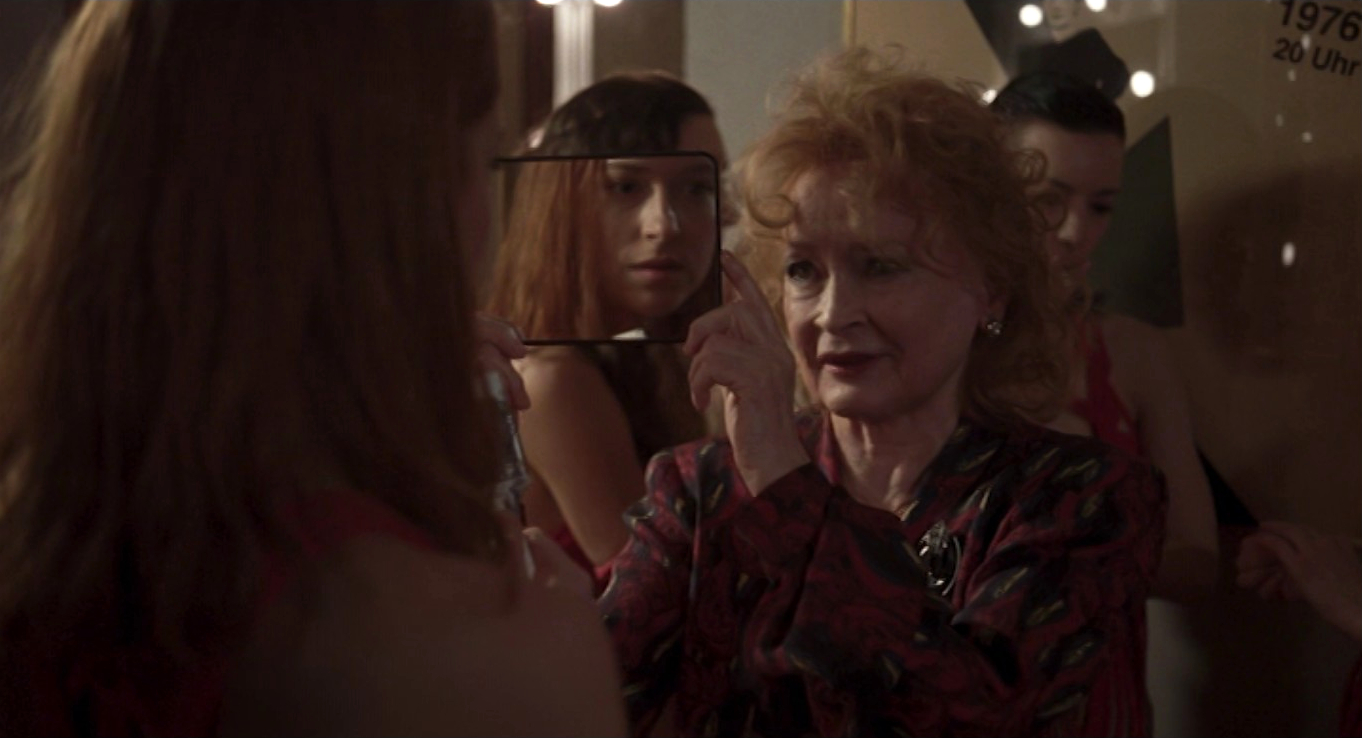
Screenwriter David Kajganich managed to cram in some meaty symbolism as well as revisiting his Third Reich fascination, explored in Joel Schumacher’s Blood Creek (2009). Though the prominent feminist subtext would be taken more seriously had it been penned by a woman.
The coven exists in its own insular world, set apart from the wider patriarchal (and failing) political infrastructure. It’s ruled by women who vote, as if in a kind of democracy, on who should lead them. But then vow unquestioning allegiance to the chosen—a sort of fascist-leaning collectivism. They have become ‘feminazis’ and revel in their autonomy. They particularly enjoy dominating men of power, exemplified by the authoritarian police detectives and the learned doctor.
However, we know that absolute power corrupts absolutely, and the coven seems to have fallen prey to a false messiah. They have accepted the claims of the ancient, vampiric Helena Markos that she is one of the three mothers from pre-Christian mythology. This is an overt reference to the exploitation of folklore to reinforce the Teutonic heritage dreamt of by Nazi Germany and used to create their mythology of a master race.
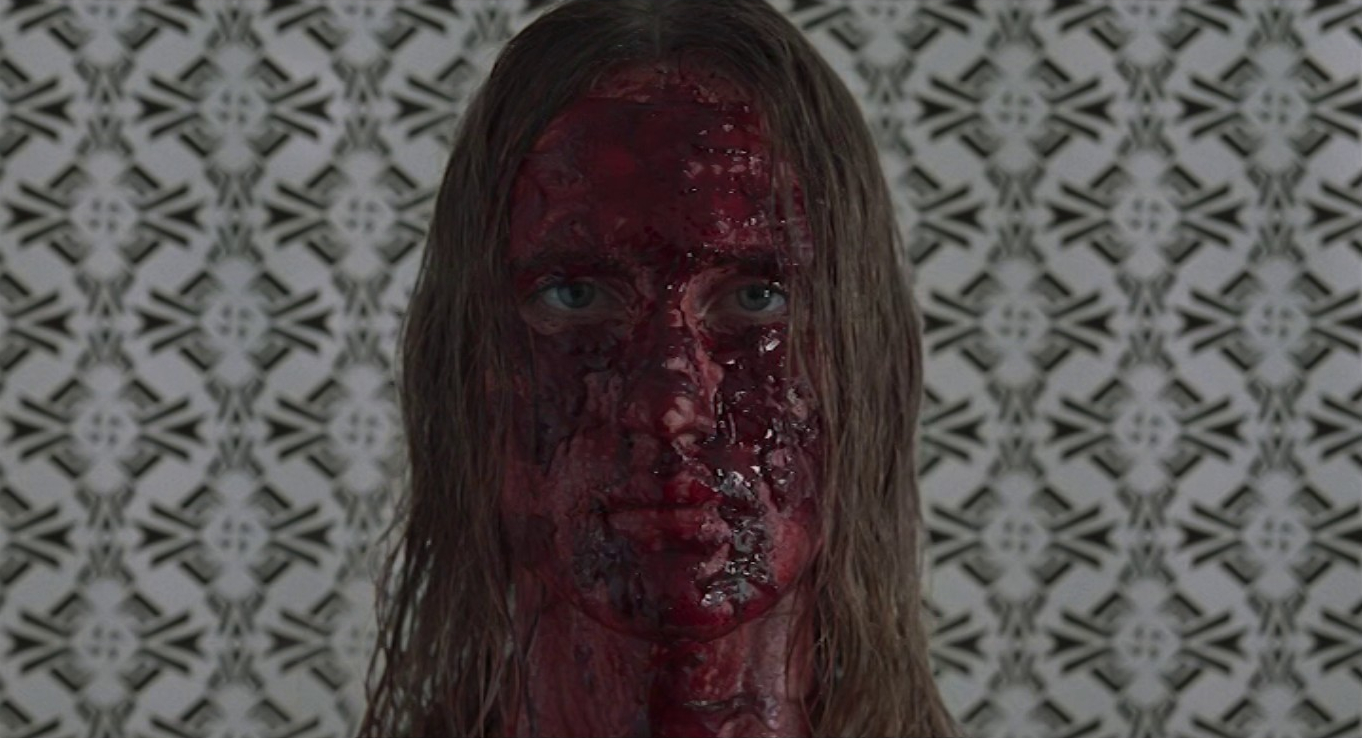
It seems that Kajganich also returned to the source material that first inspired Argento: Levana and Our Ladies of Sorrow is a segment from Suspiria De Profundis (Sighs from the Depths), an extended series of prose-poems written by Thomas de Quincey and published piecemeal in the mid-19th-century. In it, we’re introduced to three sisters, Mater Lachrymarum, Mater Suspiriorum, and Mater Tenebrarum. Dr Klemperer paraphrases this passage when explaining his theories and fears to Sara, the dancer who knew Patrizia and befriends Susie.
Argento was more faithful to De Quincey’s feverish, drug-and dream-fuelled romanticism and embraced the subtle ambiguities with the use of equally poetic metaphor. Kajganich’s script approaches the themes in a far more cerebral and literal way. His interpretation of the poems is psychoanalytical, and one supposes that’s why he made his only male protagonist a psychiatrist.
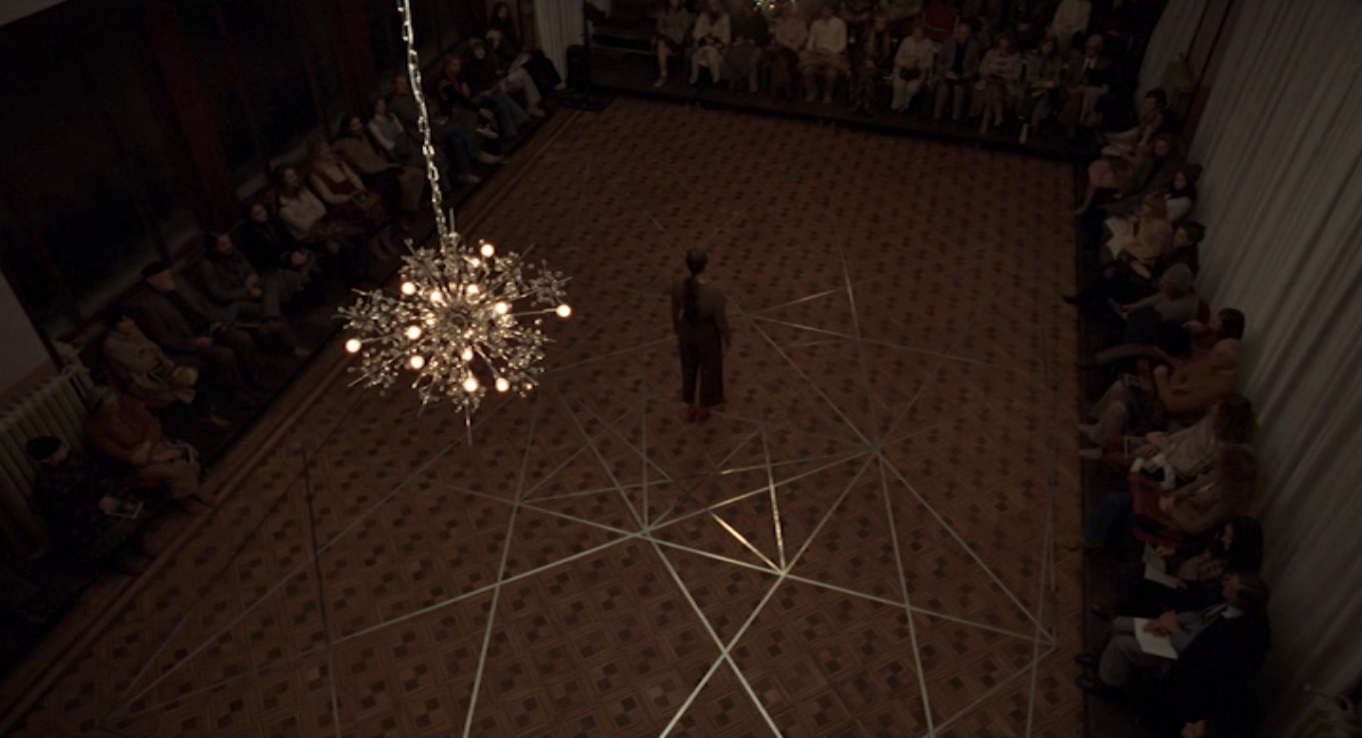
The female leads are exceptional. Dakota Johnson is a revelation and conveys so much more subtlety and depth than we could have expected from her leading roles in the 50 Shades of Grey trilogy. The whole narrative relies on her mercurial character that transforms from excited newbie dancer to strong-willed diva, through suffering for her art, becoming a victim, before finally going through a kind of rebirth into an assured vamp that’s both seductive and scary. This version of Suspiria is definitely her story.
Tilda Swinton draws on her experience as Narnia’s White Witch and has an equally cold edge as Madame Blanc, who’s stepped in as the Dance Company’s lead choreographer since Helena Markos ‘retired’… what’s more astonishing is that she plays a triple role. She’s also beneath the grotesque prosthetics of the collage of decaying body parts that is Mother Markos. And, yes, we know now that she is indeed Lutz Ebersdorf and, as such, she also turns in a great performance as the male lead!
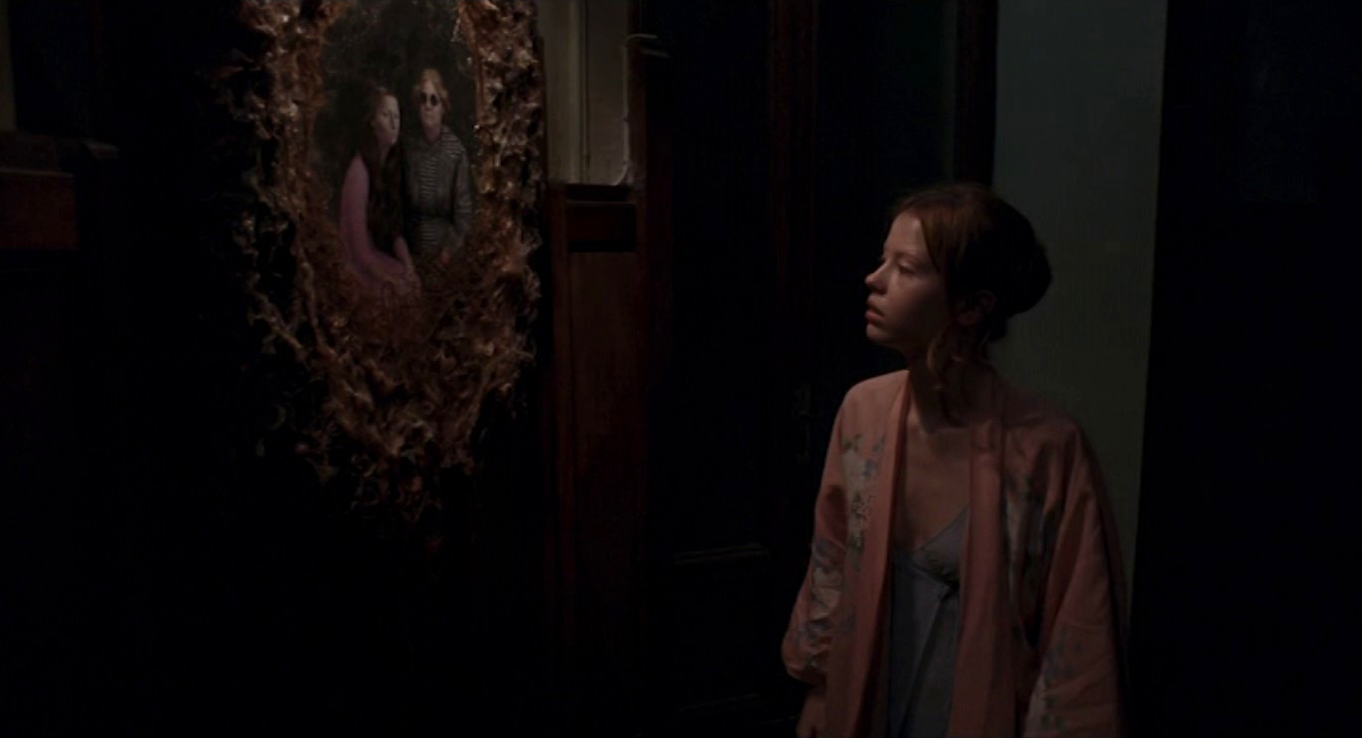
If you didn’t know beforehand, his character would be compellingly convincing. It does look like the actor’s wearing old-age make-up, but there’s neither a physical nor gestural resemblance to Swinton. She conspired with the production team to keep this a secret. They even posted a false IMDb page for Ebersdorf! Obviously, this would become a talking point, but was not exploited much in the pre-release PR. Luca Guadagnino held back the reveal till later…but why
It’s since been hailed as one of the great transformations in cinema, especially impressive as the character gets quite a lot of screen time and has plenty of revealing close-ups, as well as being seen naked! Swinton said she did it purely for fun and it would’ve been “dull not to.”
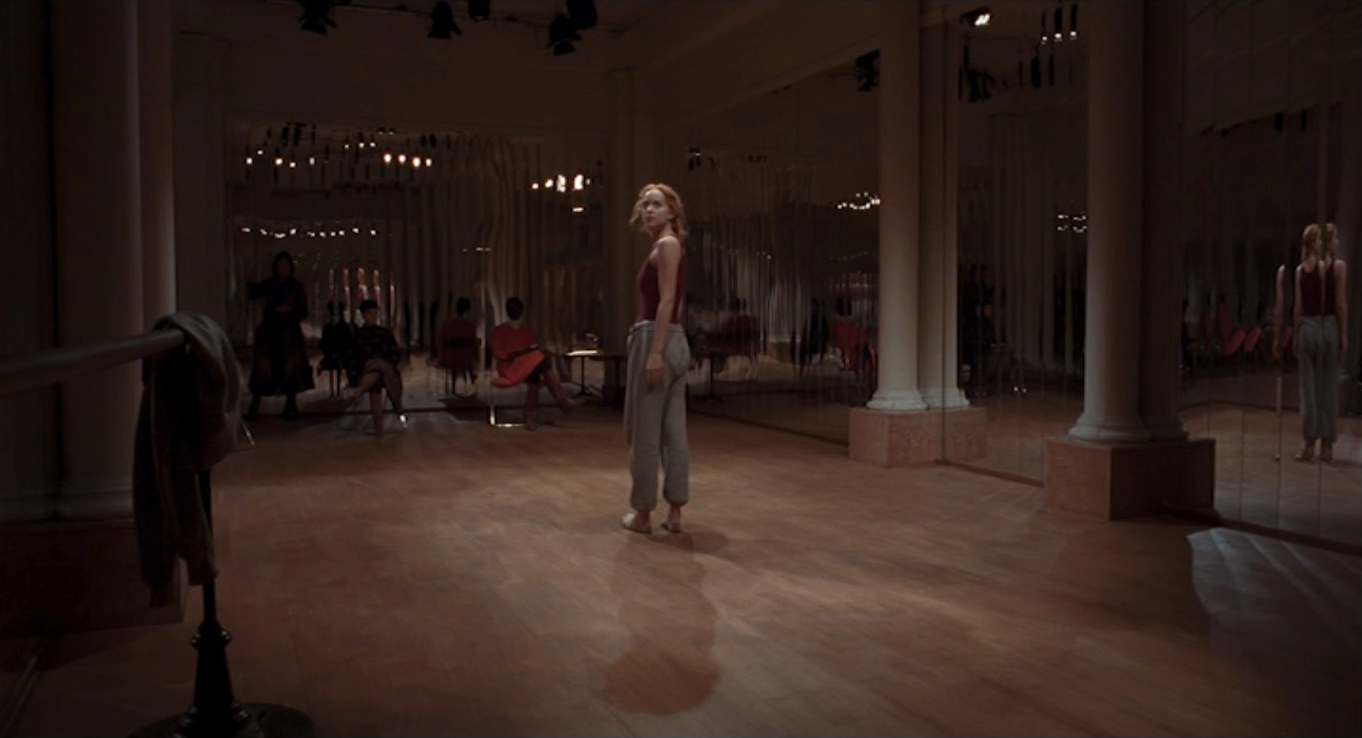
Guadagnino and Kajganich give far more pretentious reasons that read like extracts from an undergraduate thesis. They hoped to turn the film, quite literally, into a psychological thriller and looked to the theories of Sigmund Freud and C.G Jung. The triple role was intended to represent their concepts of Ego, Super Ego, and Id (the three components that make up our internal Self), whilst at the same time embodying the anima (primordial image of a woman within the male psyche) and animus (the image of the masculine within women).
Jungian analysis has been used to deconstruct age-old fairytales and is taught as part of A-level Film Studies. As are the theories of Laura Mulvey. Guadagnino and Kajganich cite her feminist theory of the ‘male gaze’ and ‘the three looks of cinema’. (The camera looks at the constructed reality within the film. The audience looks at the characters in a voyeuristic manner. The characters in the film look at each other in designated ways.) You can Google her if so inclined but the gist of it is that the male gaze actively looks, whereas the female gaze is averted to allow the male gaze to be maintained.
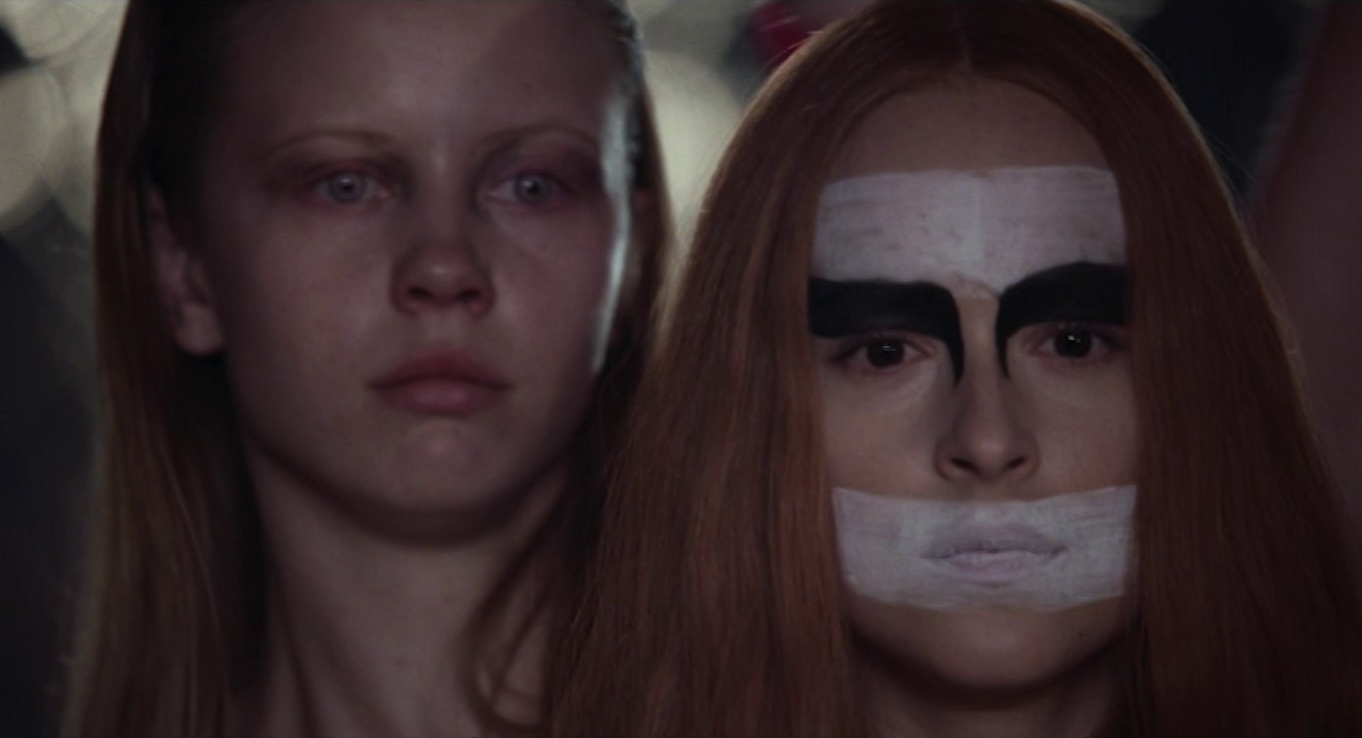
There are several shots at key points when Susie becomes stronger and looks fiercely into the camera as a deliberate challenge to this. They claim that they had their male lead played by a woman to prevent the intrusion of the male gaze in an otherwise female-dominated cast.
They may have missed the point a little as Mulvey maintains that both the industry, and the content of cinema, is generally ‘phallocentric’ and simply a component of ‘patriarchal media’ – male producers, writers and directors dictate how the camera views the actors and, in turn, present them to a voyeuristic audience. So, ultimately, it’s the male gaze that remains dominant here!
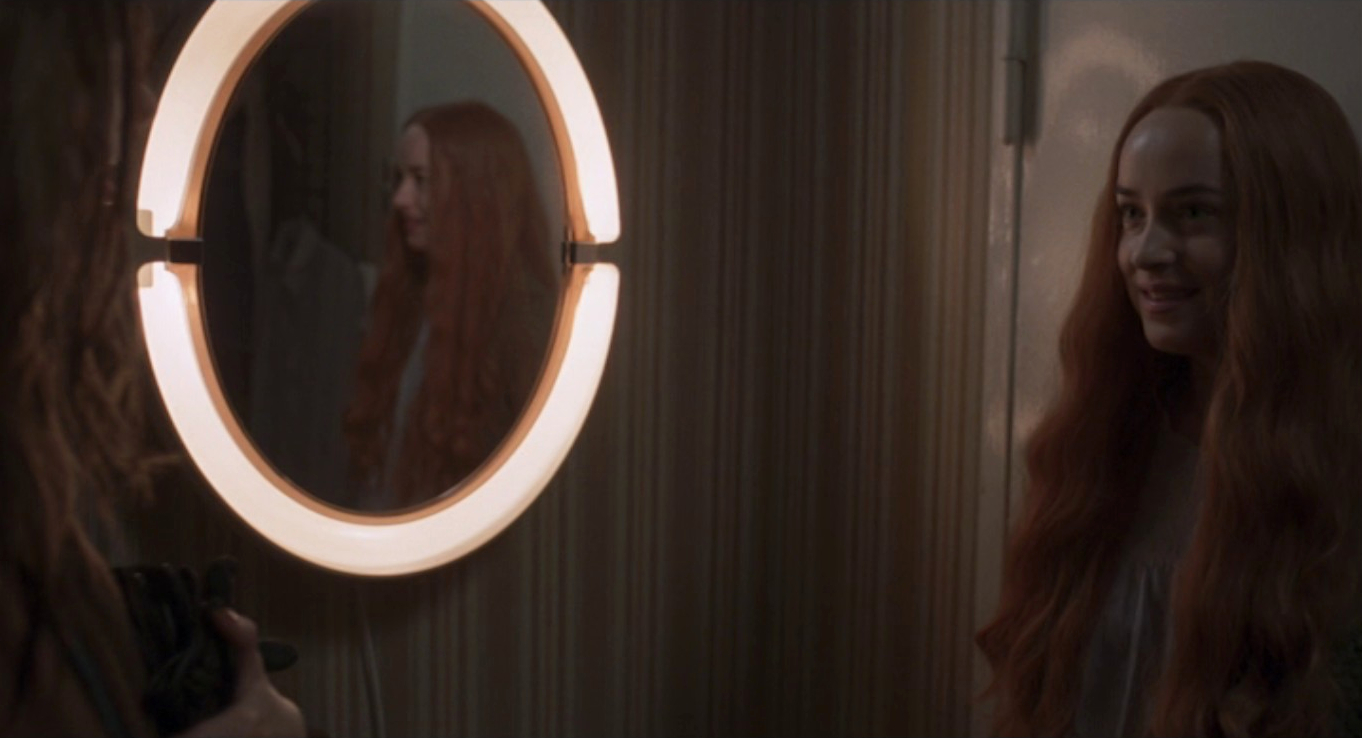
In the film, the girls are choreographed by women. In reality, the bold contemporary dance routines were devised and developed by Damian Jalet. For me, the dancing takes up way too much screen time, but I like the idea it’s through dance that the coven performs their rituals. The magical grid that Klemperer finds in Patrizia’s journal, later to be drawn on the floor for the final dance performance, is also a direct visual quote from art history. This time Oskar Schlemmer’s diagrams showing the dynamics of dance in a three-dimensional stage space for the Bauhaus design school, which was once located in Berlin.
In Suspiria, these lines not only depict the energy of movement but represent lines along which psychic forces are flung out by the dancers. Nice, but in Argento’s version, dance was thankfully kept to a minimum. Instead, the tight, magical choreography is showcased in the way the film is put together as a whole—a dance of death from start to finish and all the more exhilarating for it.
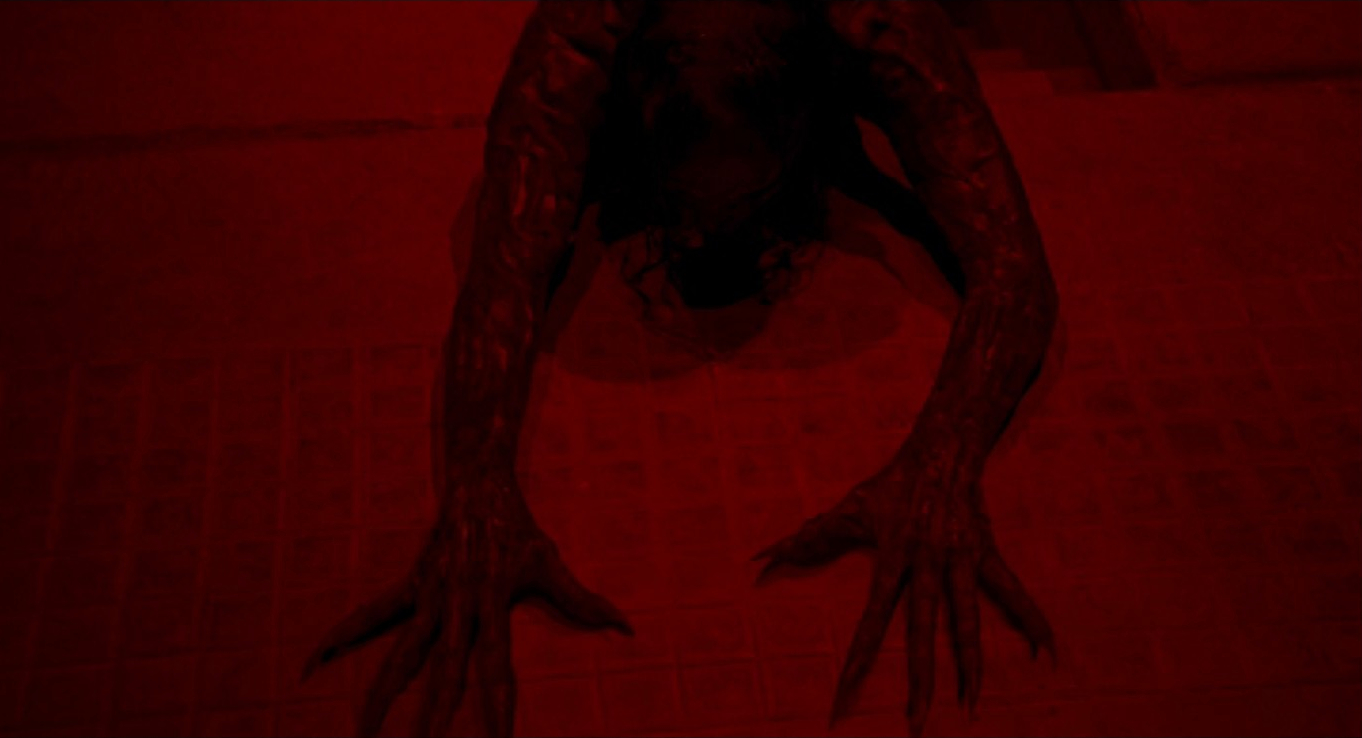
This new take on Suspiria will please a different audience. (But not a big enough one. So far, it hasn’t earned back half of its $20M budget.) It’s far more contemplative and thoughtful. Or should that read ponderous and pretentious? I found the first half effectively absorbing, but it began to drag around the 90-minute mark—incidentally the duration of the original!
Fans of Argento’s film will find plenty to talk about. There’s also plenty to argue about! But that’s all part of the fun. Those who found the original brash, instead of beautiful, may enjoy this more subdued approach but, for me, the horror element was more cruelly brutal because it lacked the delirious dream-like quality. It may not be a great film, but it’s a good one. With clearer storytelling, a tighter narrative, less dancing about, and with about an hour trimmed off, it would’ve been a contender.

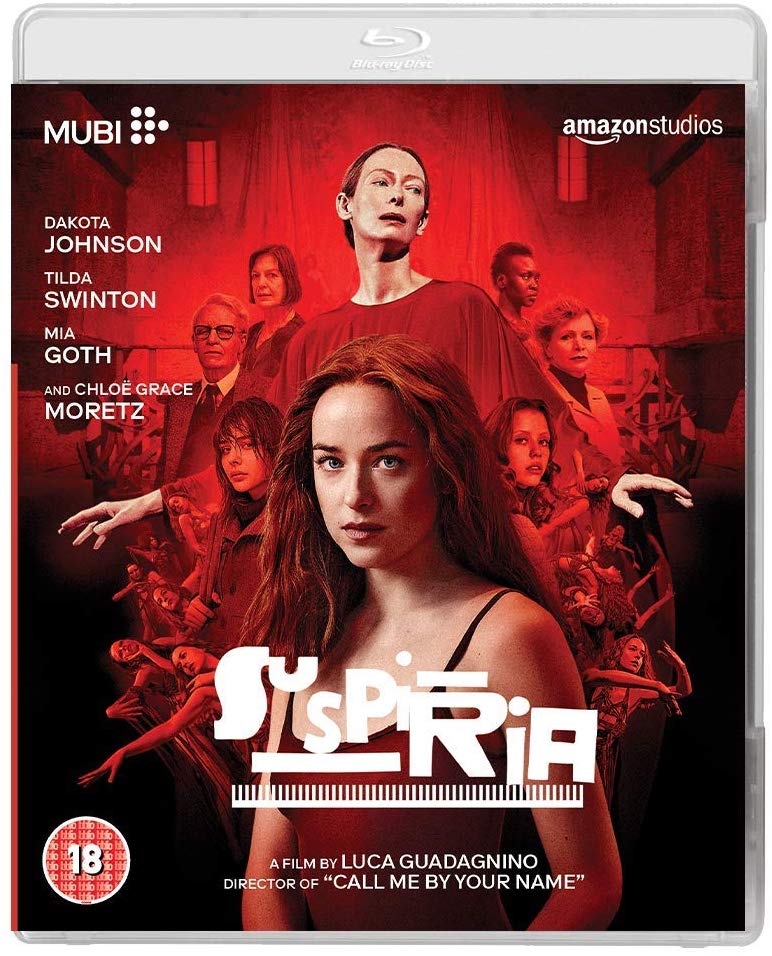
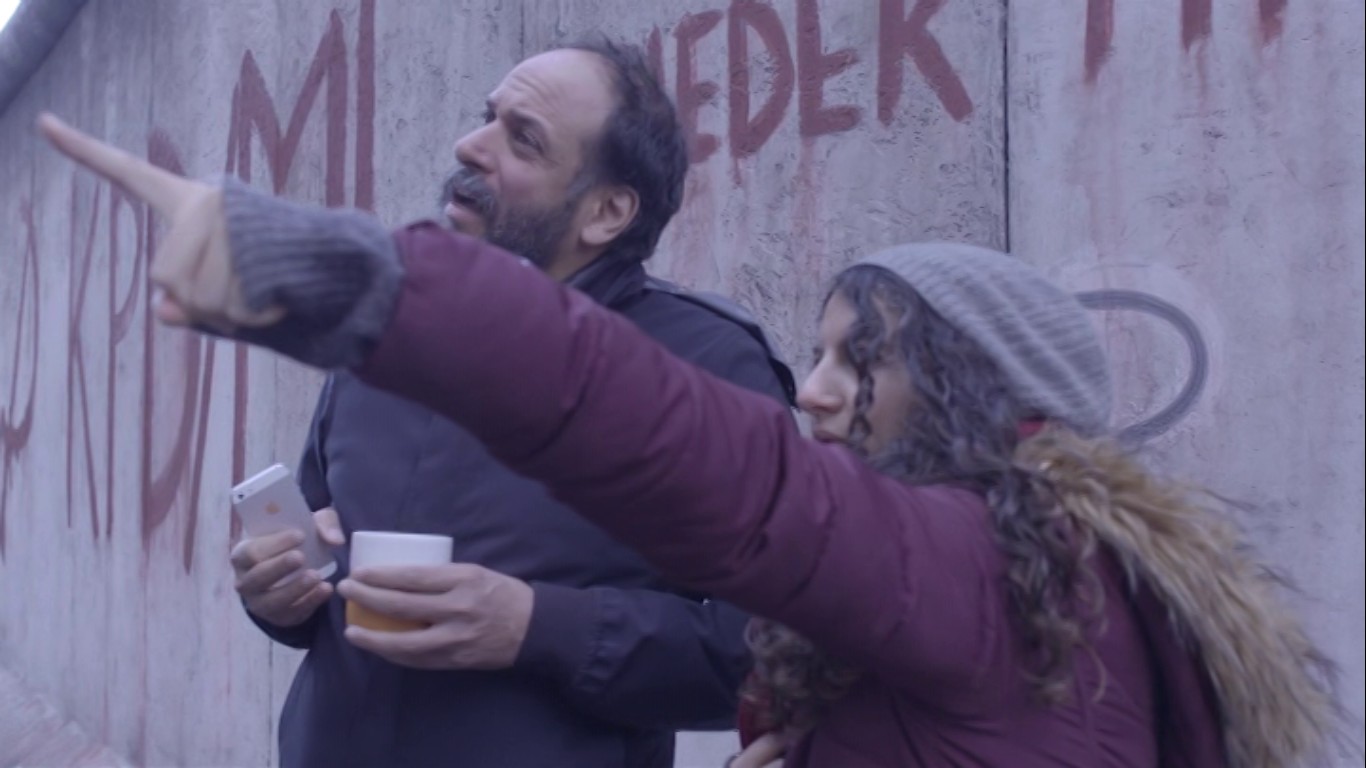
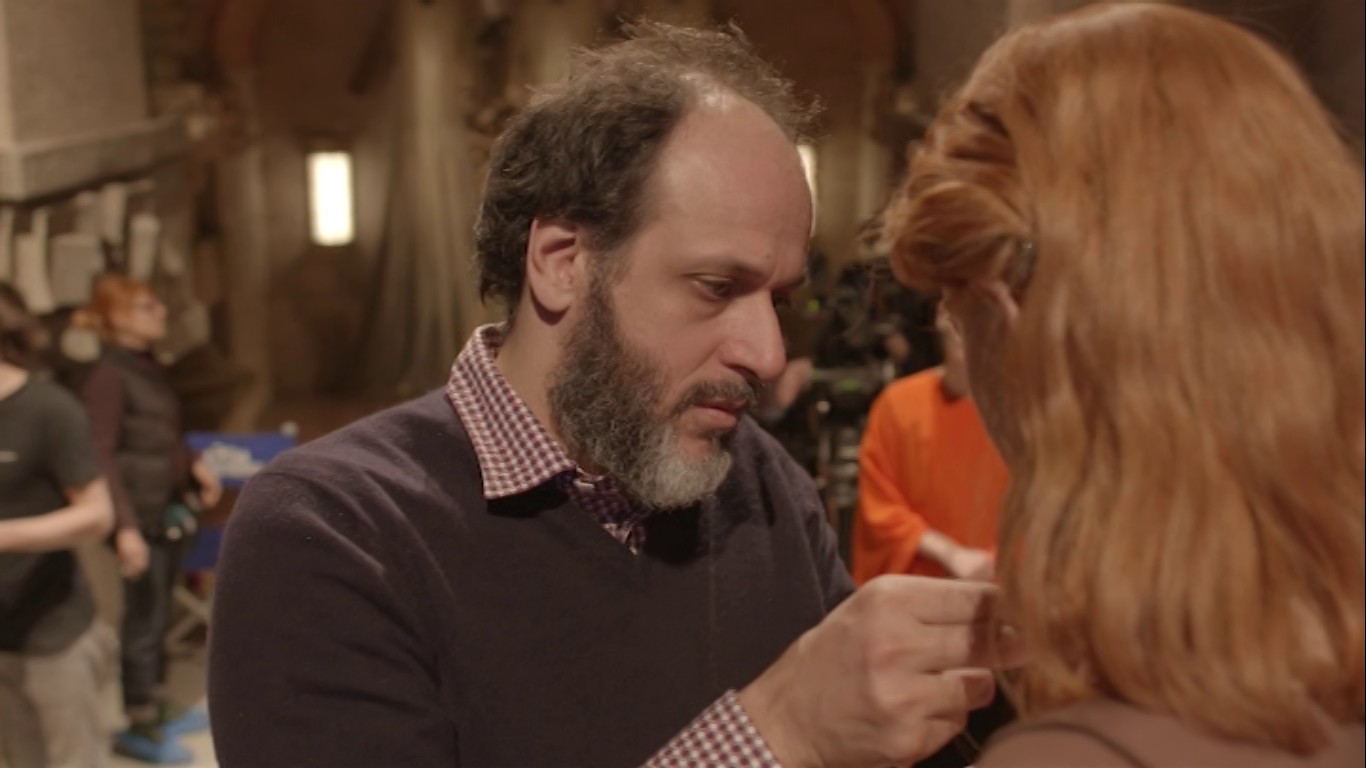
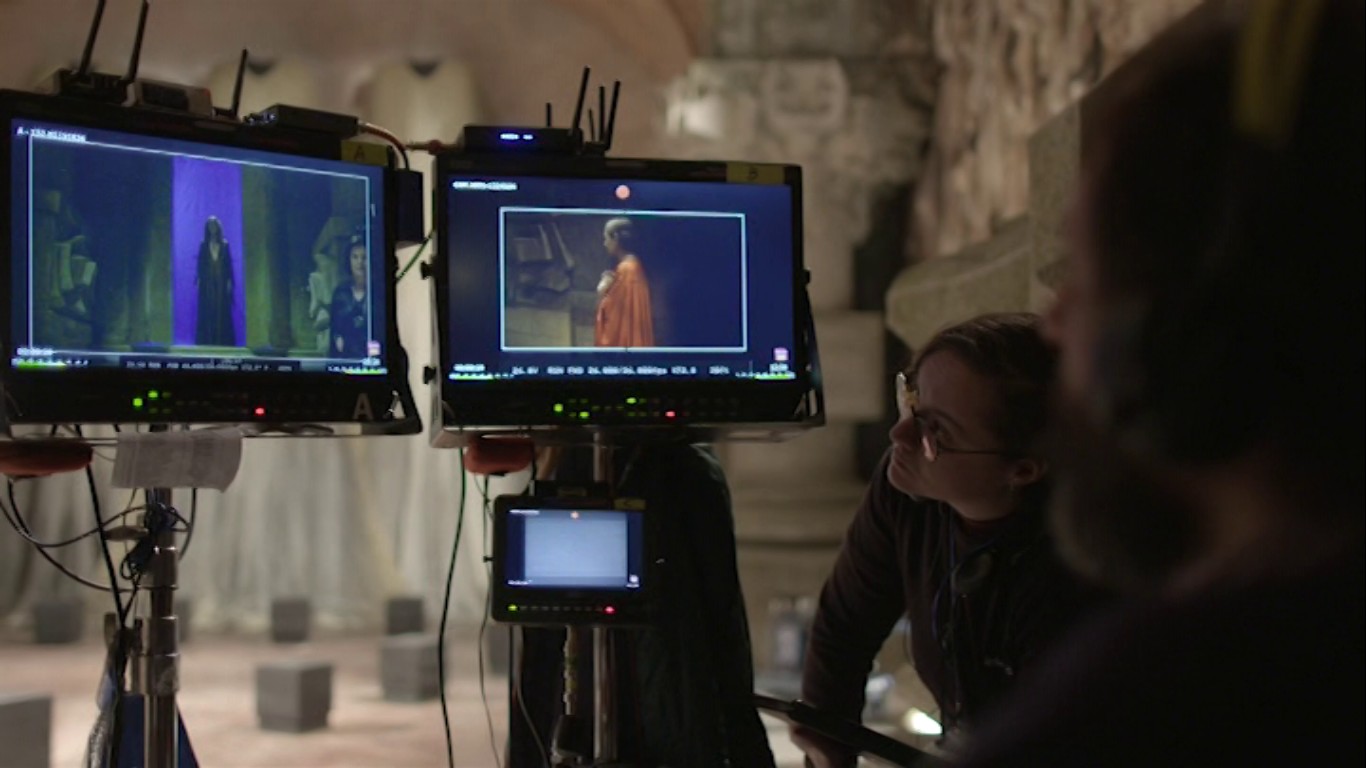
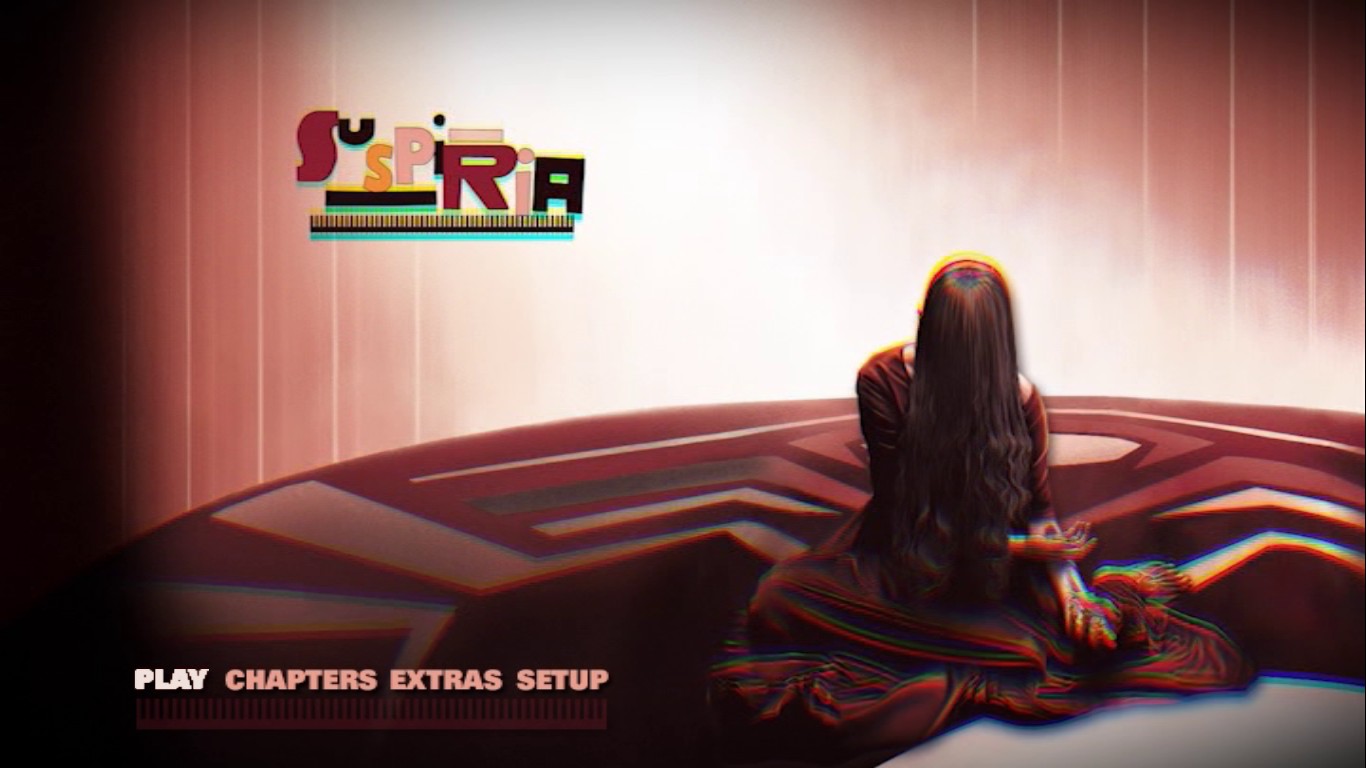

director: Luca Guadagnino.
writer: David Kajganich (based on characters created by Dario Argento & Daria Nicolodi).
starring: Tilda Swinton, Dakota Johnson, Chloë Grace Moretz, Mia Goth, Angela Winkler & Jessica Harper.
